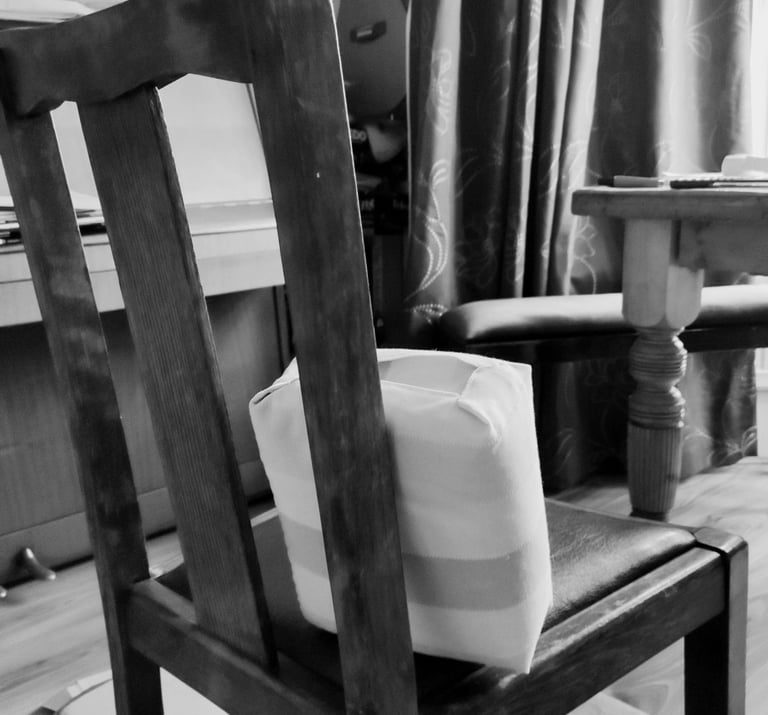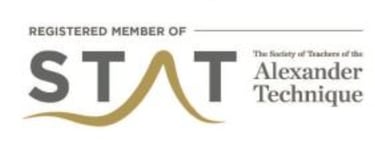Alexander and the Cigar Box
Alexander Technique
FM Alexander was know to use a cigar box as an aid to teaching his technique, and although first generation teachers continued to use then, they have fallen from fashion in recent times. The box was chosen because of its size (alternatively you could use a book), and to give it a more abrasive quality his was covered in velvet fabric. My own box was made for me by a friend and although not velvet covered, is more than sufficient for my needs.
According to Walter Carrington he asked Alexander about the development of the use of a book or box for support, and reported Alexander’s answer in his 1946 diary:
In class this morning I asked FM about the evolution of the ‘book’. He replied as follows. He wanted something to place behind his back in the chair in order to feel that part of his back. At first he tried an ordinary book. That was too heavy and tended to fall out of place. Then he tried tying it to the back of the chair with tape. That was not satisfactory because it was inclined to stimulate him to pull down and shorten his back. Next he tried an empty cigar box, but that slipped too easily. Finally he hit on the idea of a velvet-covered cigar box. This would stay in position by tending to cling to his clothes, but at the same time it would slide easily on the polished back of the chair and so enable him to lengthen up from it without difficulty.
The purpose of the cigar box was (a) to stimulate the somewhat insensitive region of the anti-gravity muscles and (b) to stimulate the shoulder-blades to slip into place. He said that he does not often use the ‘book’ himself now, because he can get what he wants with other means by his hands, but he advises us to do so in working with pupils and on ourselves. In the latter case, however, he remarked that there is some danger of losing our length in putting the ‘book’ in place (A Time to Remember by Walter H. M. Carrington).
I have personally found the box very helpful in both teaching and my own personal practice. By having the box placed behind the upper back of a student it allows them to lean back into the chair without slumping into the lower lumber (a very common habit). This gives an opportunity to create openness in the front of the chest and the shoulders to naturally widen.
During a lesson, whist in a slightly leaned back position, I will ask a student to consider reaching forward as if to reach for something which is further than arm’s length away. In good use a person will release up and away from the pelvis, the head will lead, followed by the spine and the forward movement will come from rotating around the sitting bones. This allows good support of the spine and minimum gripping in the hips. However, what is more than likely to happen is the student will begin by pulling their shoulders forward, collapsing the chests and stiffening the lower back to counter balance the effect of the weight of the head as it is thrown forward. In order to help the student I will use my hands to encourage a free neck and their back to lengthen and widen. I then keep light pressure on the shoulders as they are given the instruction to reach forward. Most students will quickly notice the endgaining habit of attempting to grip their arms and shoulders even before the spine has had a chance to move, and it gives them a good opportunity to not only notice their habits but also to inhibit then in real time activity. By attempting the activity several times the student learns through experience that the most practical method to move involves the following sequence
· Inhibiting their initial habits (and maintaining this throughout the sequence)
· Allowing the neck to be free so the head can lead forward and up into movement
· Directing the back to flow up and into width
· Allowing the release of the knees forward and away which facilitated a rotation of the hips on the sitting bones.
With this primary sequence established the arms are more released and free to choose to either pick up an object or even change activity mid flow. The box is useful for this exercise as it allows feedback to the student from a place that they usually do not get. It also highlights the relationship between the shoulders and the torso and how that relationship can alter by inhibiting the general habit to pull forward and down in front (compressing the thorax).
The above is an example of what we call in the Alexander Technique, a game. You can make almost any activity in life a game, which in turns makes the technique a practical learning tool as opposed to something practiced as an isolated exercise.



